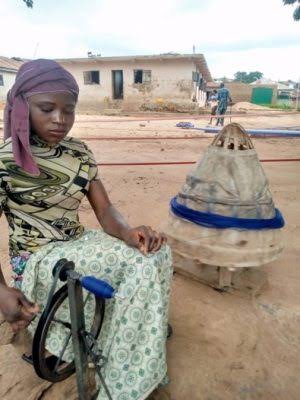Nigeria, a country located in West Africa, is renowned for its diverse cultural heritage. From art to music, cuisine to fashion, Nigeria is a melting pot of traditions that have evolved over centuries. One of the most remarkable aspects of Nigeria’s cultural heritage is its rich textile history.
Nigeria’s textile industry dates back to pre-colonial times when local fabrics were made using traditional methods. The country was known for its production of cotton, silk, and wool, which were used to make clothes, blankets, and other textile products. However, with the arrival of European traders and colonialists, the local textile industry began to decline.



During the colonial period, the British introduced imported textiles to Nigeria, which had a negative impact on the local industry. Imported textiles were cheaper and more readily available than locally-made fabrics, which led to a decline in demand for Nigerian textiles.
Despite this setback, Nigeria’s textile industry remained resilient, and traditional methods of weaving and dyeing were preserved. In fact, Nigerian textiles became popular again in the 1960s and 1970s, during the country’s post-independence period, when there was a renewed interest in promoting local culture.
Today, Nigerian textiles are a symbol of the country’s rich cultural heritage, and they are highly valued both locally and internationally. Nigerian textiles are known for their intricate designs, bold colors, and unique patterns. The most popular Nigerian fabrics are adire, aso-oke, and kente.



Adire is a traditional Yoruba fabric that is made using resist-dyeing techniques. The fabric is dyed using indigo, and then a paste made from cassava flour is applied to create the patterns. The paste resists the dye, creating beautiful designs on the fabric.
Aso-oke is a hand-woven fabric made by the Yoruba people of Nigeria. It is used for special occasions such as weddings and funerals. Aso-oke comes in a variety of colors and patterns, and it is often combined with other fabrics to create unique designs.
Kente is a Ghanaian fabric that has become popular in Nigeria. It is a hand-woven cloth made from silk or cotton, and it is characterized by its bright colors and geometric patterns. Kente is often worn during special occasions, and it is also used to make bags, hats, and other accessories.







In conclusion, Nigeria’s rich textile heritage is a testament to the country’s diverse cultural traditions. Despite the challenges faced by the local textile industry, traditional methods of weaving and dyeing have been preserved, and Nigerian textiles continue to be highly valued both locally and internationally. By celebrating and preserving this cultural heritage, we can ensure that Nigeria’s textile traditions are passed down to future generations.

